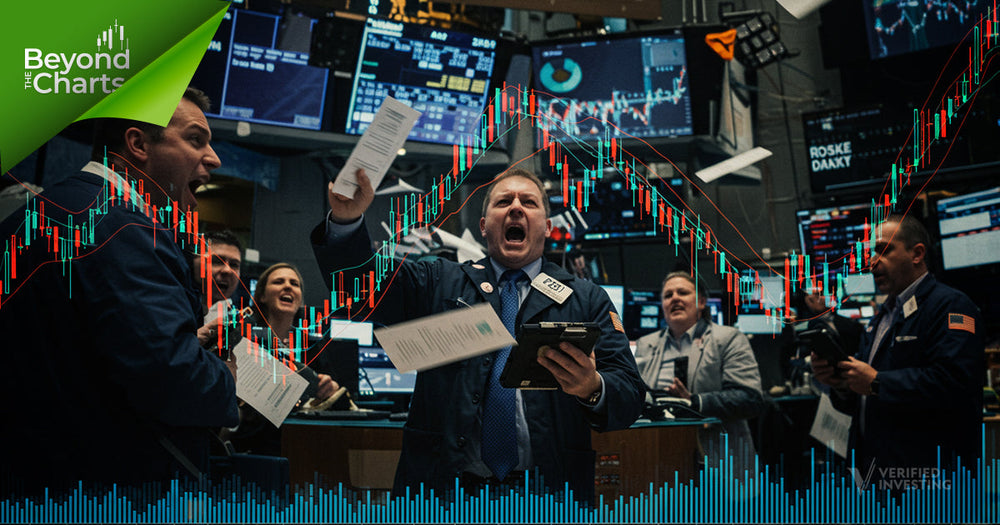The Psychology of Markets: How Human Behavior Shapes Financial Outcomes

Unmasking the Emotional Undercurrents That Drive Rallies, Panics, and Everything in Between
A Dawn of Market Emotions: Setting the Stage
A crisp, late-winter dawn broke over Wall Street, painting the skyline in muted pinks and grays. Despite the stillness in the air, the atmosphere buzzed with anticipation. At a corner café, a young trader named Marcus sipped his double espresso, eyes flickering over his phone’s glowing screen. Every market open felt like a grand premiere—equal parts suspense, intrigue, and nerves. Just down the street, a more seasoned investor, Simone, checked her watch for the hundredth time. She recalled an old adage: “Markets can remain irrational longer than you can remain solvent.” It never rang truer to her than in the frantic days of a bull run.
Across the world, in home offices and trading floors alike, a collective question formed: What will drive today’s trading frenzy—rational analysis or raw emotion? Beneath the charts, graphs, and numerical tickers that define the financial world, an undercurrent of psychology pulses. It propels bull markets to euphoric heights and drags bear markets into despair. From the “get rich quick” mania of early-stage bubbles to the paralyzing fear that grips investors during crashes, human behavior is often the invisible hand guiding trades.
In this installment of our Beyond the Charts series, we’ll delve into the core psychological drivers that underpin market movements. Together, we’ll explore how emotion, bias, and cognitive shortcuts can elevate—or sabotage—one’s financial outcomes. As we journey through history, data, and real-life vignettes, you’ll discover why understanding market psychology might be the most crucial skill an investor can develop.
Historical Echoes: Foundations of Market Sentiment
Human emotion has always played a starring role in the theater of finance. Even in the earliest markets—bartering systems for grains, spices, or precious metals—sentiment shaped prices as much as supply and demand. Fast-forward to 17th-century Holland, and the now-famous Tulip Mania offers one of history’s most striking illustrations of mass psychology. As tulip bulbs became fashionable, speculation turned frenzied. Farmers traded land for rare bulbs, aristocrats vied for the rarest breeds, and within a few feverish years, a single flower commanded a price that dwarfed the average worker’s annual salary.
While the tulip bubble eventually burst, plunging many into financial ruin, the underlying catalyst wasn’t a lack of economic structure—it was a collective belief that prices would keep climbing. That same fervor has echoed through centuries: the South Sea Bubble in 18th-century England, the Roaring Twenties leading to the 1929 crash, and the Dot-Com Boom of the late 1990s. Each episode shares a common DNA: investors feeding off each other’s optimism or panic in a cycle that grows detached from fundamental reality.
Enter John Maynard Keynes, the influential British economist who famously remarked, “Markets can remain irrational longer than you can remain solvent.” While Keynes is often cited for his macroeconomic theories, this particular insight underscores the market’s often bewildering relationship with human psychology. Despite an abundance of data and increasingly advanced trading technology, investing remains at its core a human endeavor—one subject to fear, greed, and the swirl of crowd behavior.
Why does this matter for modern investors? Because understanding the historical interplay between emotion and market outcomes offers a powerful lens for interpreting today’s price swings. From meme-stock surges to global economic cycles, seemingly novel phenomena often rest on timeless psychological foundations. Recognizing these undercurrents is the first step toward navigating markets with more clarity and resilience.

Analyzing the Pulse: Data, Biases, and Behavioral Trends in Markets
The Emotional Spectrum: Fear and Greed
In finance, two emotions frequently take center stage: fear and greed. During bull markets, greed can manifest as an overwhelming confidence—investors pour in money, expecting perpetual growth. As valuations soar, fundamentals sometimes fade into the background. Behavioral economists call this phenomenon optimism bias, where individuals overestimate positive outcomes and underestimate risks.
By contrast, bear markets often see a surge in fear—panic selling, hoarding of cash, and a mass retreat from anything deemed “risky.” Once fear takes hold, herd mentality amplifies the impact; as more investors sell, prices drop, causing further fear and even more selling. From an evolutionary standpoint, humans are wired to react quickly to threats. In financial markets, this survival instinct can trigger mass capitulation events that overshoot rational pricing levels.
Data Point: A 2021 study from the Journal of Behavioral Finance found that when investor sentiment is high, market volatility tends to increase in tandem. This correlation suggests that heightened positive or negative emotion leads to more dramatic price fluctuations, whether during exuberant rallies or precipitous sell-offs.
Cognitive Biases That Skew Decision-Making
Human cognition is riddled with shortcuts—known as heuristics—that help us navigate a complex world. However, these shortcuts often introduce errors in judgment:
- Confirmation Bias: Investors seek out information that reaffirms their preconceived beliefs. If you’re bullish on a technology stock, you might naturally gravitate toward glowing analyst reports while dismissing legitimate red flags.
- Anchoring: We latch onto a specific price point (e.g., the 52-week high of a stock) and evaluate all subsequent price movements relative to it, even if that anchor lacks fundamental basis.
- Loss Aversion: Research by Nobel laureate Daniel Kahneman found that people feel the pain of losses more acutely than the pleasure of gains—often leading to holding onto losing positions too long or selling winning positions too quickly.
Market Sentiment Indicators
To quantify these emotional drivers, market participants and analysts often look to sentiment indicators:
- VIX (Volatility Index): Nicknamed the “Fear Index,” the VIX measures expected volatility in the S&P 500. A spike can signify mounting investor anxiety.
- AAII Sentiment Survey: Conducted by the American Association of Individual Investors, it measures the percentage of investors who are bullish, bearish, or neutral on the market. Extreme readings can sometimes forewarn reversals.
- Put/Call Ratio: A ratio comparing the volume of put options versus call options. A high ratio indicates bearish sentiment (investors buying puts to hedge or bet on declines), while a low ratio suggests bullishness.
These data points don’t predict market direction with 100% accuracy, but they provide snapshots of collective psychology. An extremely low VIX, for instance, may hint at complacency and set the stage for sudden spikes in volatility.
Case Study: The Dot-Com Euphoria
Consider the Dot-Com Boom of the late 1990s. Internet-based companies—some with little more than a business plan—achieved astronomical valuations. Fueled by media hype, everyday investors jumped in to capture the “next Microsoft.” As the NASDAQ soared, the fear of missing out overshadowed fundamental metrics like earnings or revenue. Eventually, skyrocketing stock prices detached from the real-world viability of these companies.
When the bubble burst, trillions in market value evaporated. From a psychological standpoint, the dot-com craze was a textbook illustration of herd behavior meeting recency bias (where recent strong performance is assumed to continue indefinitely). Investors ignored cautionary voices in the rush for quick gains.
Stat: Between 1995 and its peak in early 2000, the NASDAQ Composite rose by over 400%. By 2002, it had lost nearly 78% of its value from that peak.
Why Understanding Market Psychology Matters
- Better Timing of Entries and Exits: Recognizing emotional extremes can help you avoid buying into an overpriced asset during the peak of hype or panic-selling at a market bottom.
- Risk Management: Being aware of your own biases can reduce the likelihood of impulsive decisions, such as doubling down on a losing trade purely out of pride or panic.
- Long-Term Perspective: Emotional markets often overshoot on both ends—bull or bear. A level-headed investor can benefit from these extremes by focusing on fundamentals and patiently awaiting value opportunities.
Ultimately, markets are not mechanical systems governed by pure logic. They are, at their heart, social arenas brimming with stories, hopes, and fears. Understanding that reality is the first step in harnessing the power of psychology, rather than falling victim to it.
Human Faces in Finance: Stories of Triumph and Turmoil
Marcus: The Novice Trader
Remember Marcus from our introduction? He epitomizes the modern rookie investor. Fueled by social media chatter and online forums, Marcus is constantly bombarded with hot tips and stock memes. One morning, he sees a trending hashtag about a small biotech firm “on the verge of revolutionizing cancer treatment.” The hype is intense—countless people on his feed are claiming the stock will skyrocket.
Marcus invests heavily, ignoring warnings that the biotech’s drug hasn’t completed Phase III trials. A few months later, the trial results are inconclusive, and the share price plummets by 60%. Devastated, Marcus realizes he fell for a classic trap: letting crowd psychology override due diligence. The emotional lure of high gains overshadowed risk assessment, and he pinned his hopes on a storyline rather than verifiable facts.
Simone: The Seasoned Investor
Unlike Marcus, Simone has navigated multiple market cycles—from the Dot-Com crash to the 2008 financial crisis. In her early days, she too chased momentum stocks, only to watch her portfolio whipsaw with every swing of market sentiment. Over time, she learned the importance of contrarian thinking—buying undervalued assets when most people are fearful, and cautiously reining in exposure when euphoria runs high.
Simone’s approach embodies emotional discipline. She sets specific entry and exit strategies, reevaluates them periodically, and tries not to deviate unless the fundamentals shift. While she’s not immune to market mania—no one truly is—her years of experience have honed her awareness of common psychological pitfalls. She no longer invests because “everyone else is doing it”; instead, she invests in alignment with carefully researched theses.
Learning Through Personal Narratives
These two contrasting characters highlight a universal lesson: investors of all experience levels grapple with emotion. Marcus’s story underscores how swiftly hype can become heartbreak. Simone’s journey shows that emotional mastery is an ongoing effort, requiring self-awareness, research, and sometimes the humility to step back from the crowd.
When we peel away charts and fundamentals, we find people—and it is their hopes, fears, biases, and judgments that drive the tumultuous, ever-captivating saga of financial markets.

The Dual-Edged Sword: Balancing Risk and Reward in Market Psychology
-
Rewards of Harnessing Psychology
- Identifying Value in Panic: If you stay calm during a market panic, you can scoop up high-quality assets at discounted prices.
- Riding Momentum Responsibly: Recognizing periods of elevated optimism can be profitable—provided you keep an eye on valuations and set stop-loss orders to limit downside.
-
Risks of Neglecting Psychology
- Emotional Overreach: Acting on impulse or crowd sentiment can lead to buying overpriced assets or selling at the worst possible time.
- Confirmation Bias Pitfalls: Focusing solely on bullish or bearish news can blind you to critical warning signs, increasing the odds of painful losses.
Balancing the ambition fueled by greed with the caution prompted by fear is no small feat. Yet, those who approach investing with an awareness of their mental and emotional processes stand a better chance of preserving capital and, in many cases, outperforming those who trade on impulse alone.
Future Horizons: Embracing Technology Without Losing Human Insight
Where does market psychology go from here, especially in an era increasingly dominated by sophisticated algorithms and AI-driven analytics? Paradoxically, even as automation rises, human emotion remains a critical market force. Algorithms can parse data in microseconds, but they’re built on human assumptions. When a piece of unexpected news hits—a geopolitical crisis or a viral tweet from a major CEO—panic or euphoria can still overwhelm even the most rational trading signals.
Looking ahead, we may see more nuanced sentiment indicators incorporating social media metrics, Google search trends, and other real-time data sources to gauge crowd psychology. As these tools become widely adopted, they might even intensify emotional swings by alerting traders simultaneously. For investors, this environment underscores the importance of self-awareness: the more the market leans on automated strategies, the more valuable genuine human insight becomes.
Call to Action: Begin by taking an honest inventory of your own biases. Are you prone to chasing popular stocks without thorough research? Do you struggle to pull the trigger on a trade when market sentiment is negative, even if the data supports it? By identifying these tendencies, you’ll be better prepared to spot opportunities and avoid pitfalls in the ever-evolving realm of market psychology.
Market Wisdom: Essential Insights and Final Reflections
As the trading day drew to a close, Marcus and Simone found themselves reflecting on the same market session—yet with vastly different perspectives. Where Marcus saw chaos, Simone recognized patterns. Where Marcus felt the sting of regret, Simone remembered her own past missteps and the lessons that followed. In both cases, psychology—not just the numbers—had driven their decisions.
Ultimately, understanding how emotion influences trading can be the difference between seizing opportunities and succumbing to hype. History provides cautionary tales and triumphant stories alike, but one truth stands out: markets move not only on fundamentals, but on the collective psyche of everyone involved.
Key Takeaways
- Emotions Drive Markets: Fear and greed shape buying and selling behaviors, often more powerfully than economic data.
- Cognitive Biases Are Universal: Even seasoned investors fall prey to biases; recognizing them is the first step to mitigating their effects.
- Sentiment Indicators Offer Clues: Tools like the VIX and AAII surveys help quantify market mood but are best used alongside fundamental analysis.
- Emotional Discipline Is a Skill: Through self-awareness and contrarian thinking, investors can harness emotional currents rather than be drowned by them.
In our journey “beyond the charts,” this exploration of market psychology reminds us that data-driven insights are only half the story. The other half resides in the human mind, where every trade begins.
Trading involves substantial risk. All content is for educational purposes only and should not be considered financial advice or recommendations to buy or sell any asset. Read full terms of service.




